FTC Disclosure: If you make a purchase via a link on this site, We may receive a small commission on the transaction - at no added cost to you. Thank you!
Albino Hummingbirds,
Up Close and Personal
The albino hummingbird should not to be mistaken for the more common white leucistic hummingbird, albinos are incredibly rare. Photos from this page show the classic pink eyes of any albino creature. A rare, mind-bending sight, this is a must-see for every serious fan of these ever-fascinating creatures.
Could a hummingbird be even more remarkable! It could if it were an albino. A pure white hummingbird does exist in nature. It should not be confused with a similar hummingbird, the leucistic hummingbird.
How many of us have ever seen a truly Albino Hummingbird? There are very few but we have had a few visitors witness leucistic hummingbirds but never have had witnesses to the Albino. (Note: If you do, we would love to highlight your photos here on this page!)
The Albino Hummingbird
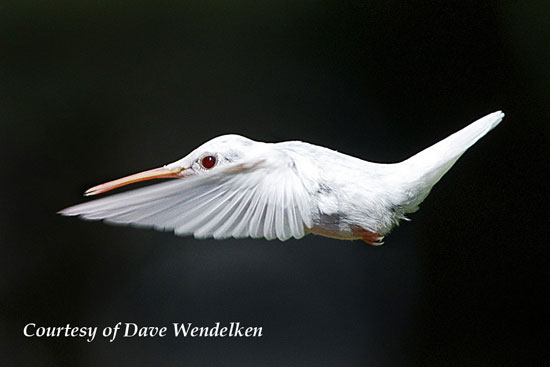
The following 2 images were kindly contributed by Rita Griffith.
A very lucky "Hummingbird Enthusiast"!
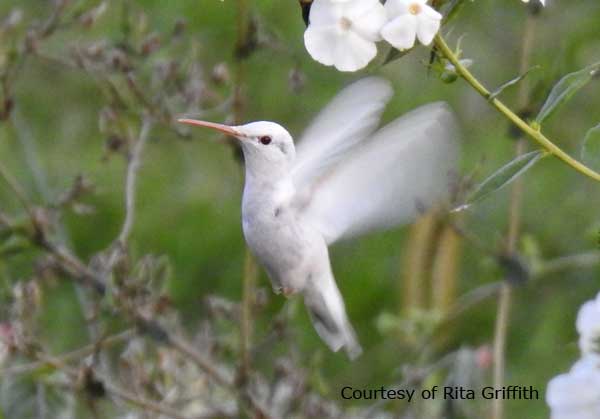
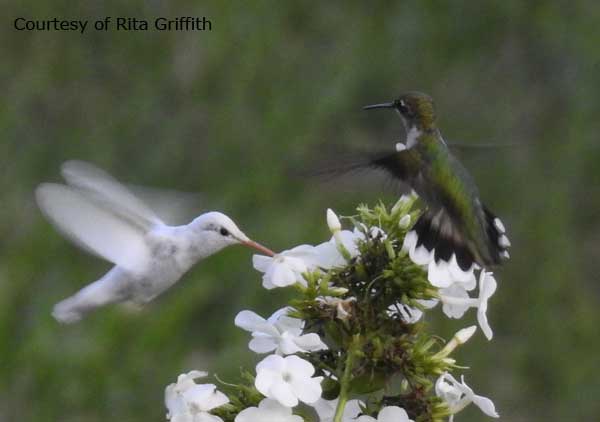
How does this happen?
To help us make this distinction, let's start with the definition of "albino". An Albino Hummingbird has a rare genetic mutation that prevents the formation of any dark pigment. This recessive gene only shows up if the bird inherits the gene from both parents.
A Rare Experience!
Here is a contribution from one of our visitors, Dr. David Jones, who had a very unique experience the Summer of 2019!
His story and beautiful photos:
I thought after feeding hummingbirds for almost 25 years in my backyard I had all the photos of hummingbirds I ever needed. Well on August 18, 2019, all of those thoughts changed. I was looking out my backdoor and thought I'd seen a white bird going to the hummingbird feeder that was closest to the house, but I couldn't see the feeder to be sure. I stepped out onto our enclosed patio to take a better look and low and behold, there was an albino hummingbird taking a drink. We only have Ruby-Throated hummingbirds here in Muskogee, Oklahoma so I'm assuming that she is one too.
She wasn't sitting at the feeder but hovering taking a drink. This became her/his (don't know how to determine sex without any coloring differences) MO for most of the 9 weeks "she" (as we decided right or wrongly) was with us. She was predictable in many ways, she would only come to the feeders if other birds were also feeding at the same time. She would fly to one of the big trees surrounding the backyard, then kind of just swoop down, kind of like you'd think an angel would fly, pick out her spot at the feeder and proceed to hover in place taking a drink.
She did this up until the 7th week when the great majority of the hummingbirds had moved on, then she (Debra named her "The Queen") decided that she didn't have any competition at the feeders or maybe she didn't have the shielding that the other birds gave her for protection, then she would sit like most of the others had. She came to the feeders about every 20-25 minutes, starting early in the morning then skipping the mid part of the day returning in the afternoon and early evening. Debra said I had become obsessed with "The Queen" since I was spending so much time observing and taking her photo.
We didn't think she was going to migrate but she hasn't been seen for 8 days now, we still have 1 or 2 immature's around, so we hope she took our encouragement to migrate for the winter and then take up our offer to return next year for the entire year. I now have thousands of photos of hummingbirds, over 1500 just of the albino, from this year when I had no intention of taking even one.
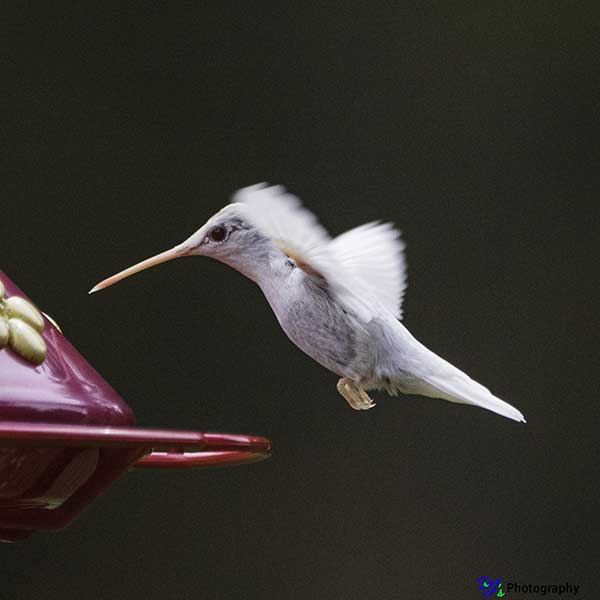
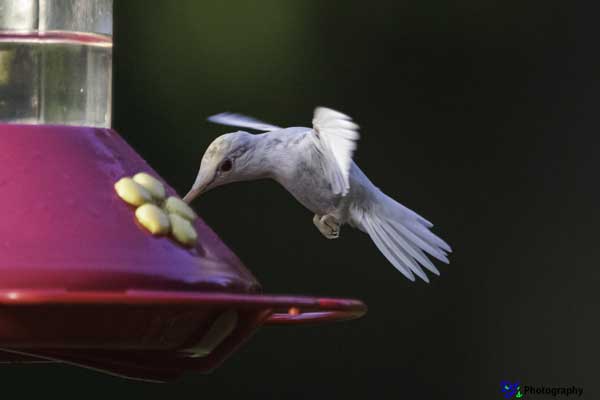
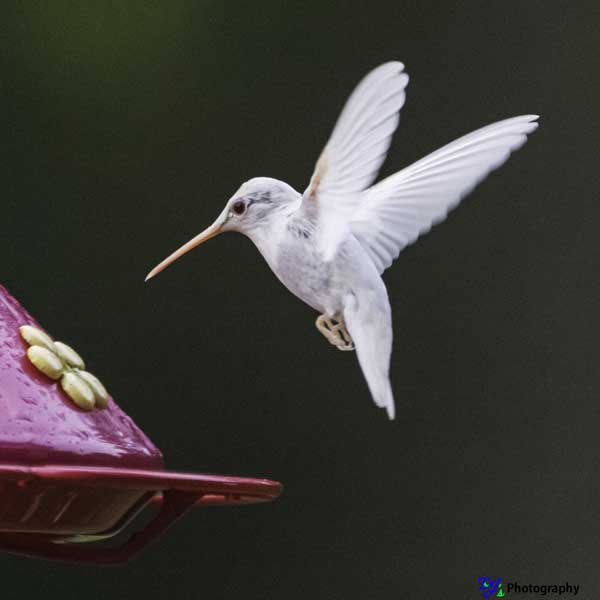
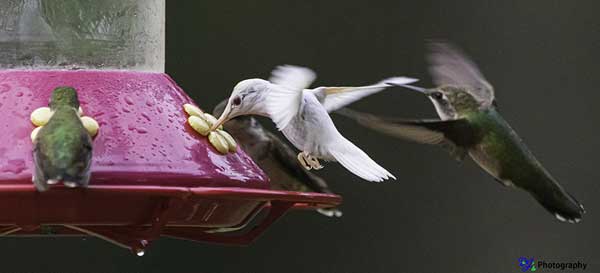
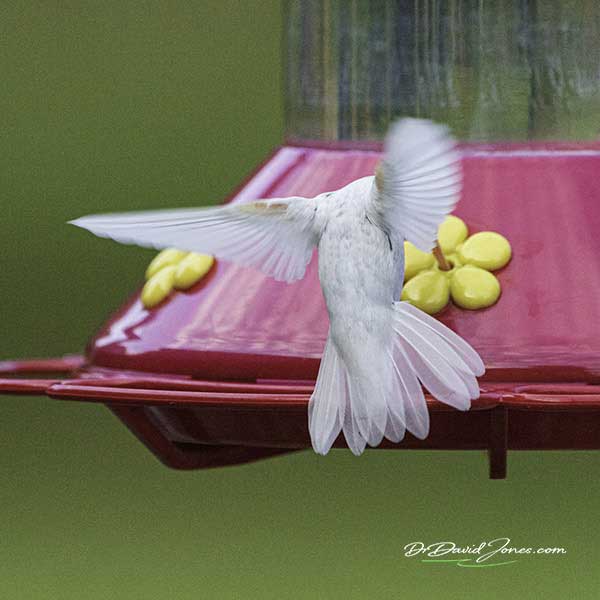
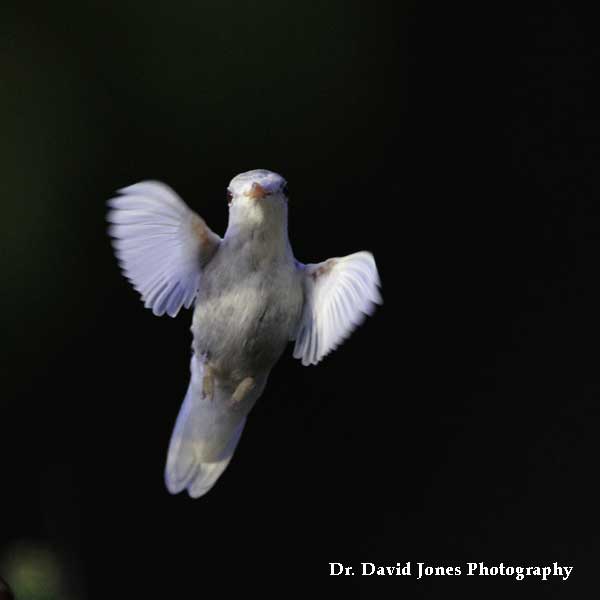
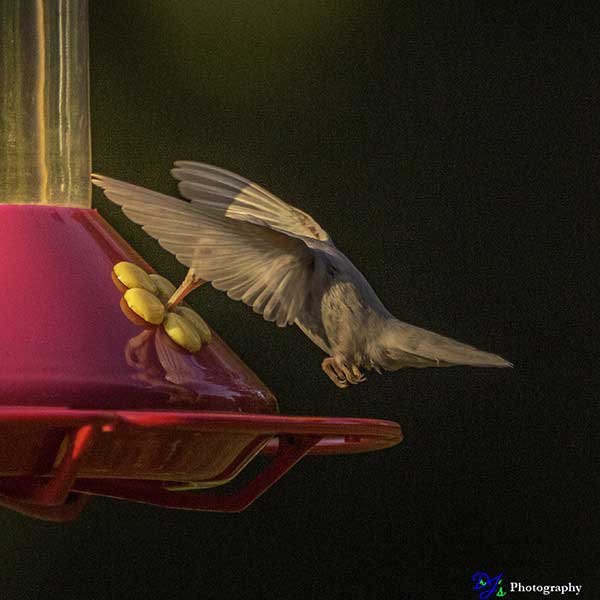
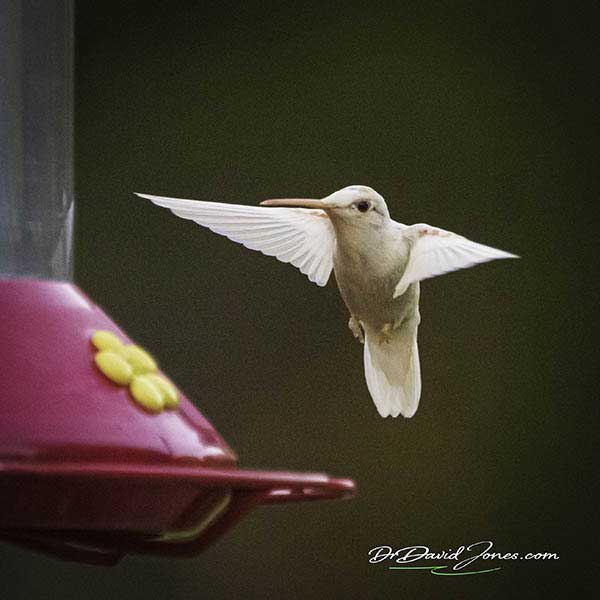
Leucistic Hummingbird
On the other hand, most hummingbirds with abnormal plumages are leucistic. These hummingbirds often lack some but not all dark pigment. Commonly, this may be due to diet deficiencies during feather development, aging or disease.
A Leucistic Hummingbird generally has white, off-white, or tan plumage. Their eyes, beak, and feet are black showing normal pigments on these body parts. An albino is always pure white. The eyes, feet, and bill of a true albino are pinkish. This indicates it has no pigment (melanin) at all.
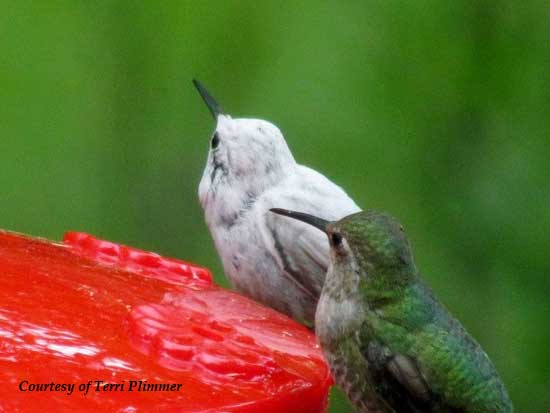
Best Friends Enjoying Dinner Together!
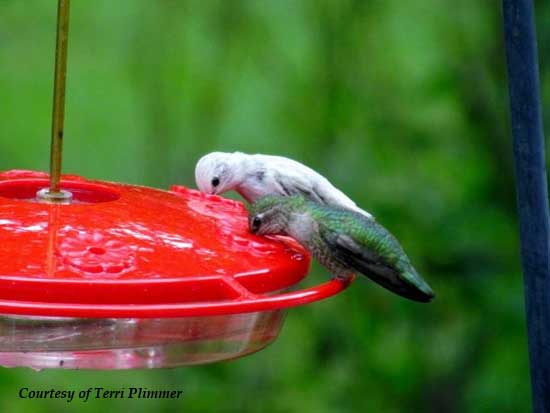

Notice that these photos of the Leucistic hummingbirds show the normal color of the eyes, beak and feet.
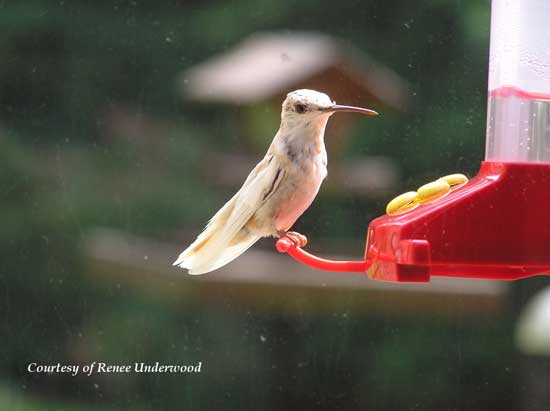
As you might guess, very few true albinos have ever been seen. Although some have been banded, none have ever been captured the following year.
Another Albino Photo
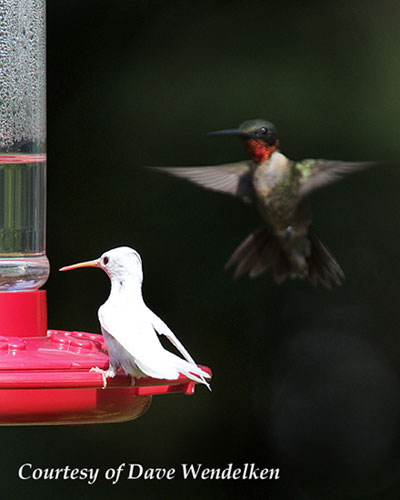
A theory among scientists is that this rare albino hummingbird does not make it through the migration due to a number of disadvantages:
- Color alone can possibly be a problem. Perhaps the white feathers are much too visible to predators.
- Possibly these feathers are brittle and break more easily.
- There might even be some genetic factors that weaken the bird before the natural life cycle of reproduction can allow for more albino hummingbirds to be born at all.
Formal scientific study has not been done at this time.
Hummingbirds are truly a wonder of nature. Everything about hummingbirds is amazing. It isn’t just the miniature size that fascinates us. Perhaps, the spectacle beauty of hummingbirds with iridescent feathers that reflect light at certain angles does capture our imagination.
The interesting behavior of these birds is practically unrivaled. With a metabolism that enables them to eat twice their body weight in nectar each day, these creatures expend energy almost beyond our comprehension. A hummingbird beats it wings at a rate of 60 times per minute. Only a hummingbird can fly forwards, backwards, upside down and hover in place. Learn more about Hummingbird Flight.
A mother hummingbird builds her nest about the size of a walnut shell using spider webs. Learn more about the Hummingbird Nest.
It has the largest brain of any bird comparable to its size and will return to the same feeders every year. Learn How to Attract Hummingbirds.
Here are more beautiful photos of Leucistic Hummingbirds captured by our friend Lee Marcus
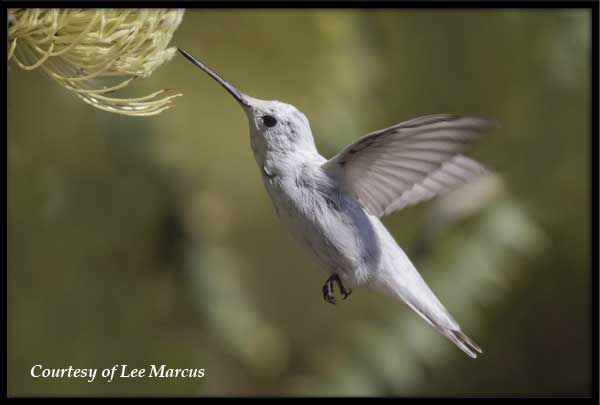
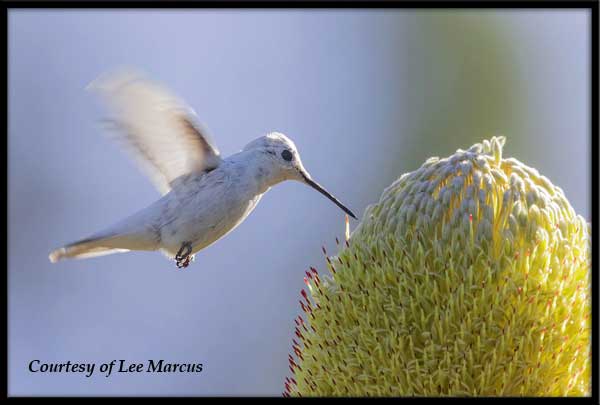
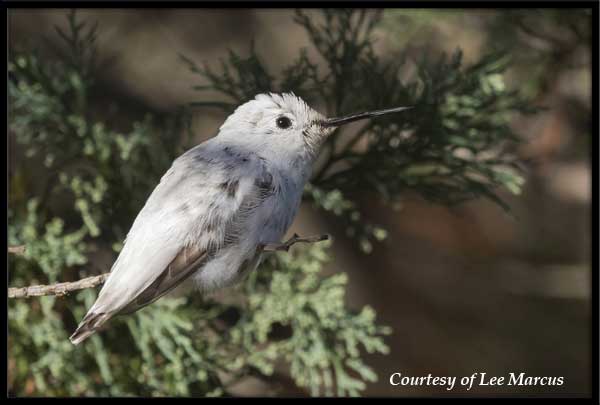
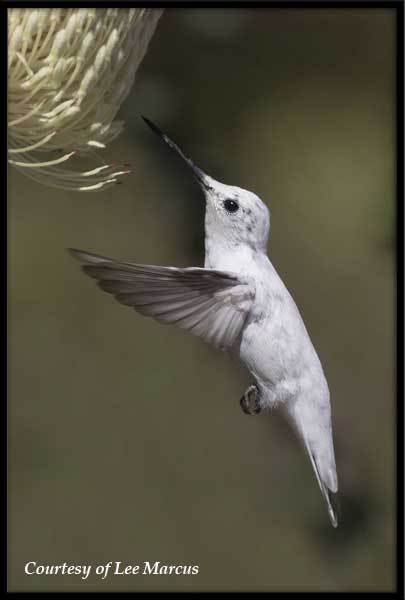
For now, a mystery about this marvelous hummingbird will remain....... adding to the many reasons we continue to be intrigued by its charm.
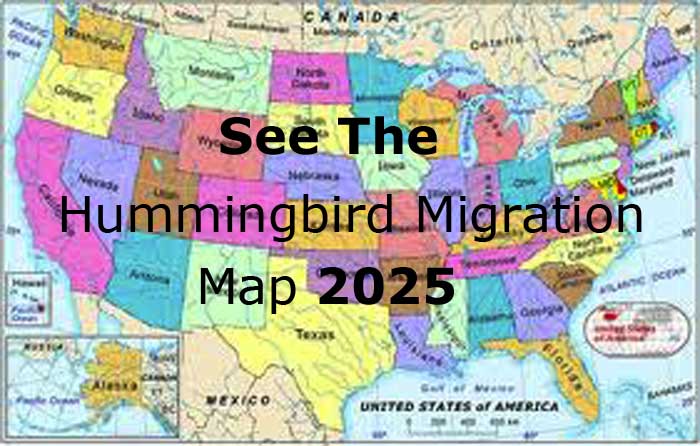

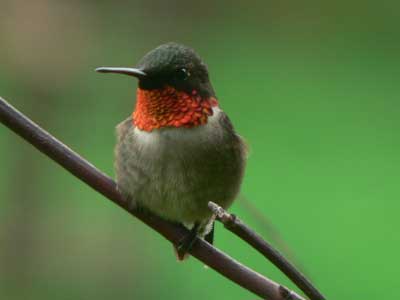







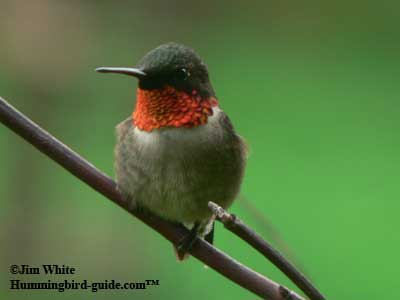
New! Comments
Have your say about what you just read! Leave me a comment in the box below.